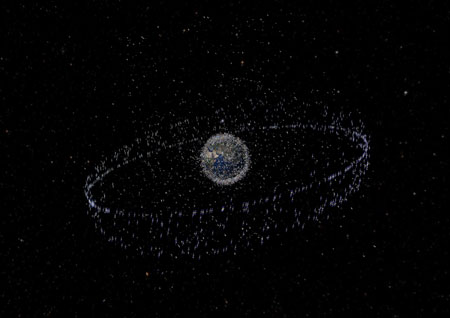Solovyov said debris from the collision could stay in orbit for up to 10,000 years and even tiny fragments threaten spacecraft because both travel at such a high orbiting speed.
|

This image shows an artist's impression of catalogued objects in low-Earth orbit viewed over the Equator. [CFP]
|
NASA said it was the first-ever high-speed impact between two intact spacecraft -- with the Iridium craft weighing 1,235 pounds (560 kilograms) and the Russian craft nearly a ton.
"At physical contact at orbital speeds, a hypersonic shock wave bursts outwards through the structures," Oberg said in e-mailed comments. "It literally shreds the material into confetti and detonates any fuels."
Most fragments are concentrated near the collision course, but Maj.-Gen. Alexander Yakushin, chief of staff of the Russian military's Space Forces, said some debris was thrown into other orbits, ranging from 300 to 800 miles (500-1,300 kilometers) above Earth.
David Wright at the Union of Concerned Scientists' Global Security said the collision had possibly generated tens of thousands of particles larger than 1 centimeter (half an inch), any of which could significantly damage or even destroy a satellite.

